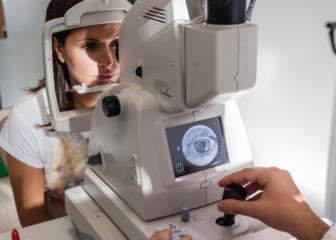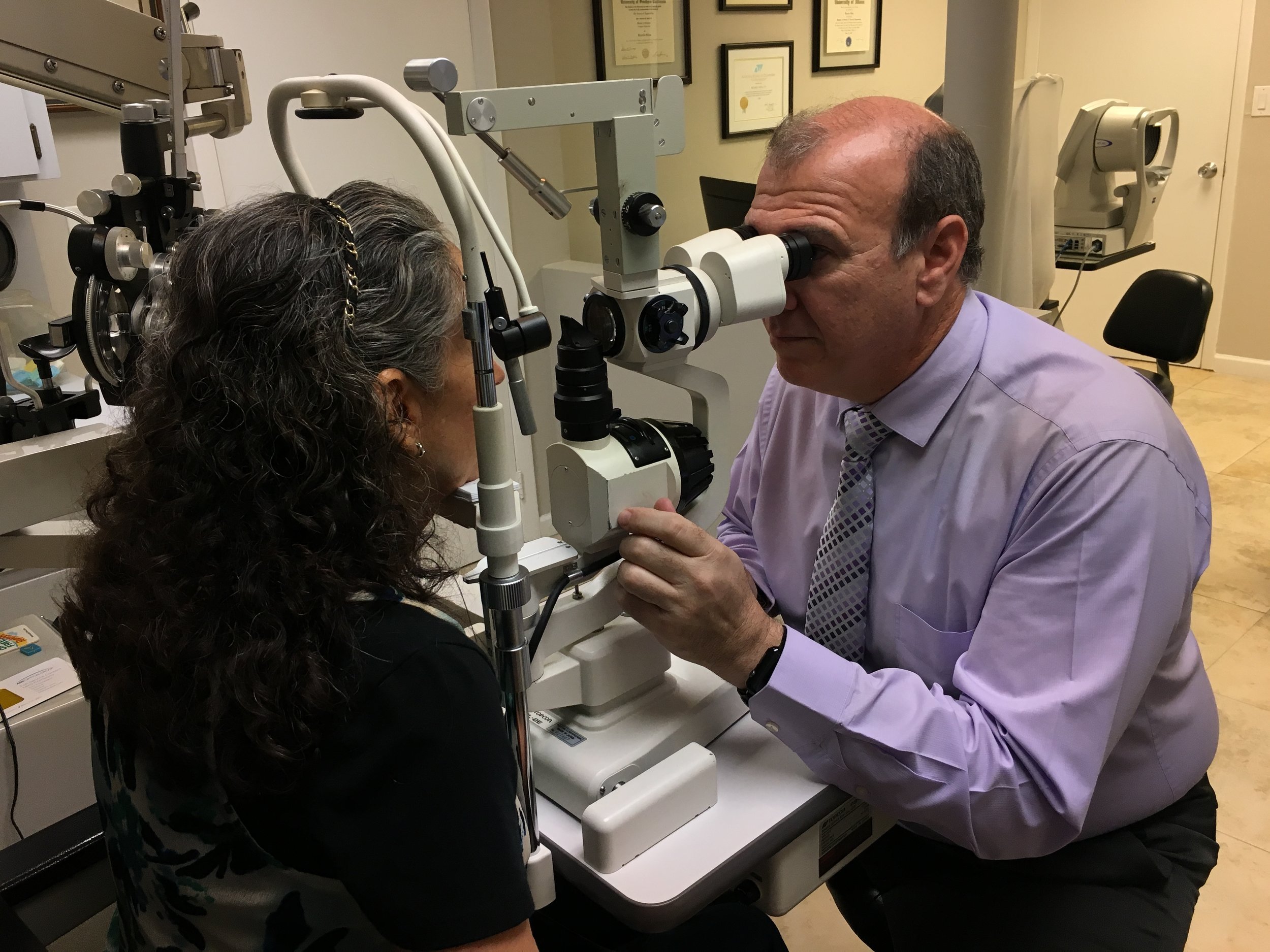Discovering the most up to date Technical Innovations in Optometry and What They Mean for Optometrists
In the ever-evolving field of optometry, recent technological innovations are improving how professionals come close to eye care. From the precision of Optical Coherence Tomography to the nuanced insights provided by AI-driven diagnostic devices, these innovations are setting new requirements in individual evaluation and therapy. Teleoptometry is positioned to redefine availability, making certain that competence goes beyond geographical restrictions. As these developments penetrate the technique, optometrists are confronted with the challenge of welcoming these tools to improve client end results. Yet, the inquiry continues to be: exactly how will these technical shifts redefine the functions and duties within the career?
Developments in Diagnostic Tools
Advancing the field of optometry, developments in analysis tools have changed the means eye treatment specialists examine and identify eye conditions and visual problems. The past decade has actually witnessed significant technical developments, allowing even more accurate and extensive analyses.
An additional secret innovation is the introduction of innovative corneal topography systems, which map the surface curvature of the cornea with accuracy. These tools are especially advantageous for fitting get in touch with lenses and diagnosing corneal conditions. In addition, digital retinal imaging has actually changed typical ophthalmoscopy, providing thorough, breathtaking views of the retina that facilitate extensive visual examinations.
The growth of wavefront aberrometry has actually also been essential, allowing the evaluation of refractive errors with unequaled accuracy (Opticore Optometry). This innovation helps in personalizing corrective lenses and enhancing medical outcomes for refractive surgical procedures. Jointly, these diagnostic advancements equip eye doctors to supply superior person treatment, making sure early treatment and customized treatment approaches, ultimately enhancing visual health and wellness outcomes
AI in Patient Administration
Structure on the foundation of cutting-edge diagnostic tools, the consolidation of expert system (AI) in individual management stands for a transformative jump for optometry. AI systems are significantly employed to enhance performance, accuracy, and customization in client treatment. By analyzing substantial amounts of data, AI can recognize patterns and forecast potential eye problems, making it possible for eye doctors to customize interventions better. This ability is important in taking care of chronic eye illness such as glaucoma and diabetic retinopathy, where early discovery and continual surveillance are crucial.
Furthermore, AI-driven platforms facilitate streamlined client communications and management procedures. Automated scheduling, online consultations, and individualized follow-up plans not only boost person satisfaction yet also maximize time management for professionals. These systems can triage patients based upon the seriousness of their problems, making sure that those in important demand get prompt interest.
Moreover, AI improves decision-making by offering optometrists with evidence-based referrals and therapy paths. By incorporating information from digital wellness records, AI tools offer insights that inform scientific choices, lowering the risk of errors and boosting patient end results. As AI remains to develop, its role in person administration will likely broaden, reshaping the landscape of optometric treatment.
Advances in Retinal Imaging
In the world of optometry, retinal imaging has actually seen amazing technical innovations that are enhancing analysis capabilities and individual treatment. Advancements such as Optical Coherence Tomography (OCT) and fundus photography have actually revolutionized exactly how optometrists picture and analyze the retina. OCT, particularly, gives high-resolution, cross-sectional pictures of the retina, enabling for the thorough evaluation of its layers. This capability is invaluable for very early detection and administration of conditions like glaucoma, diabetic person retinopathy, and age-related macular degeneration.
Enhanced imaging methods like OCT angiography are more refining diagnostic precision. This non-invasive technique maps blood flow in the retina, supplying critical understandings right into vascular wellness without the demand for dye shots. Furthermore, flexible optics innovation is being integrated into retinal imaging systems to fix eye aberrations, supplying unmatched image quality. Such advancements promote the recognition of minute retinal modifications that might indicate illness development.
Additionally, improvements in expert system are increasing retinal imaging by enabling automatic analysis of large datasets. These systems help optometrists in recognizing patterns indicative of pathology, thus enhancing analysis precision and effectiveness. Jointly, these advancements are changing retinal Click This Link imaging right into a foundation of contemporary eye treatment, improving outcomes and expanding therapeutic opportunities.
Teleoptometry's Growing Duty
Teleoptometry is significantly becoming an essential element of eye treatment, driven by improvements in electronic communication and diagnostic devices. As optometry accepts electronic change, teleoptometry promotes remote assessments, permitting eye doctors to prolong their services beyond typical limits. This is specifically useful in rural and underserved locations where accessibility to specialized eye treatment is often limited. By leveraging high-resolution video clip conferencing and advanced retinal imaging, eye doctors can carry out thorough eye tests from afar, making sure timely medical diagnosis and therapy.
The combination of artificial knowledge (AI) further improves teleoptometry, making it possible for the analysis of aesthetic information and assisting in the discovery of ocular conditions such as glaucoma and diabetic person retinopathy. AI-powered algorithms can rapidly analyze intricate imaging information, offering eye doctors with beneficial insights that boost scientific decision-making.
Additionally, teleoptometry sustains connection of care through smooth integration with electronic wellness records (EHRs), permitting eye doctors to maintain comprehensive patient backgrounds. This makes certain that individuals receive individualized and regular care even when seeking advice from different specialists.
In spite of these advantages, obstacles stay, including making certain information safety and security and handling client assumptions. Nonetheless, teleoptometry represents a significant stride in the direction of even more go to my site obtainable, efficient, and patient-centered eye treatment. As innovation develops, its function is poised to broaden better.

Future Fads in Eye Care
A myriad of cutting-edge trends is established to reshape the future of eye treatment, driven by technical developments and the progressing needs of individuals. One considerable fad is the integration of synthetic intelligence (AI) in diagnostics, which assures to boost the precision and performance of eye exams. AI formulas can assess large quantities of information from retinal images, potentially discovering conditions like diabetic person retinopathy and glaucoma earlier than traditional techniques.
In addition, personalized medicine is gaining traction in optometry, with genetic screening notifying customized treatment plans. This technique intends to optimize individual outcomes by customizing interventions to specific hereditary accounts. Wearable technology, such as clever get in touch with lenses, is also coming up, using real-time surveillance of intraocular pressure or sugar levels, therefore providing constant understandings into systemic and ocular wellness.
The adoption of increased fact (AR) and virtual truth (VIRTUAL REALITY) in training and client education and learning is another arising trend. These technologies supply immersive experiences that can enhance understanding and abilities both for optometrists and people. As these fads advance, optometrists have to remain abreast of technical innovations to supply sophisticated treatment, making sure enhanced client outcomes and fulfillment in the vibrant landscape of eye treatment.
Conclusion

Jointly, these analysis developments empower eye doctors to deliver premium patient care, guaranteeing very early intervention and tailored treatment techniques, inevitably improving visual health and wellness results.

As these technologies continue to advance, optometrists must adjust and integrate them into method, inevitably enhancing operations efficiency and boosting the requirement of eye treatment provided to people.
Comments on “Recognizing the Duty of Your Eye Doctor in Keeping Vision”